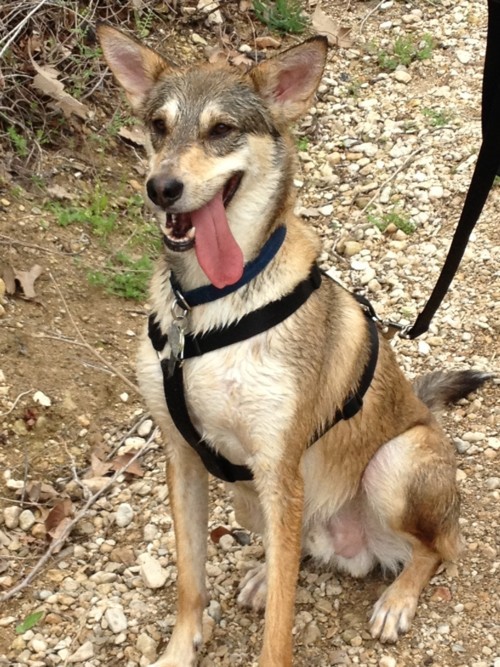I grew up in a home where my parents had always seen dogs as outdoor only farm dogs. It was not within their understanding to think that dogs should be inside, with humans, on laps or as companions. Despite this, I always had an unusual connection with them. I had the kindest neighbors, they were so gracious to have let a child into their home around their dogs and cats. I would go to their homes in the afternoons or on the weekends and play and care for their dogs or cats. My parents did not let me have any animals other than hamsters at the time so this interaction with the other species gave me such pleasure.
One day in 5th grade, I was walking home from school and saw an orange animal out of the corner of my eye. This turned out to be my first pet – a cat that had been declawed on his front paws. Little did I know that picking up such a sweet – and unknowingly helpless – cat would change my life. I don’t quite remember what I did to convince my parents to keep this particular pet, but they must have seen the desperation and devotion in my eyes. This cat was “the one” in the animal world for me. (This cat also gave me my first insight as to how careless some people can be – who would declaw a cat and then let them back outside?!) They finally said yes after a while of discussions and arguments. I began playing with him and thought that I could teach him “sit”. Well, sit sparked further training and now he also knows “lay down”, “up”, “stay”, and “come” – all taught by a young 6th grader to her cat!
As I got older I started volunteering at a local no-kill animal shelter. They saw my dedication and let me work with dogs at the shelter. This was a great environment to learn from and to meet all sorts of dogs as well as people! I often confidently lead potential adopters around the area asking about what kind of dog they were looking for, if they had kids, if they had dog experience, etc. I don’t think very many suspected I was not even an adult yet. With my knowledge of the dogs at the shelter and my questions to the adopters, I could help them find their match as well as make sure they were serious about adopting.
Around this time a certain dog whisperer became famous and I fell under his spell. (I say spell because his followers are absolutely convinced he is right about everything.) He had a way of connecting with his audience and what he said resonated with me at the time. When he came to my city, I signed up immediately to go see him. I went to his seminar and even met him in person. I now realize what he does and what the difference is between that and positive training. The biggest difference I can describe is that his methods are (for the most part) not permanent, when you remove the person who is “training”, you remove any behavior modification that was being applied. Positive training methods work with the brain to develop good “habits” (to put it in the most simplest of terms). Once a dog learns these new, good habits thoroughly, they are applied to many circumstances and distractions. With positive methods, you actually change the way a dog sees the world rather than just temporarily stopping their reaction to it. A recent article in the news interviewed some military dog trainers who stated that positive methods take longer but prove to work better in the long run. So with a little more effort from the handler in the beginning, it all gets paid off in the end. It’s not about short cuts, it’s about solid, long-term results – and having a happy dog!
